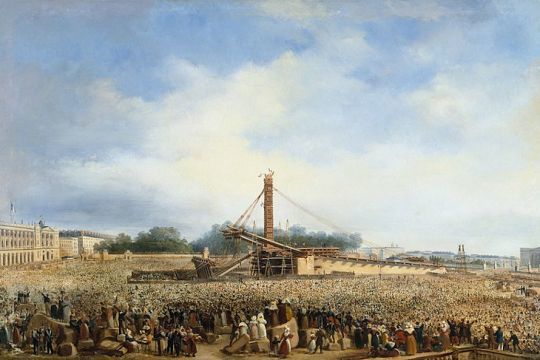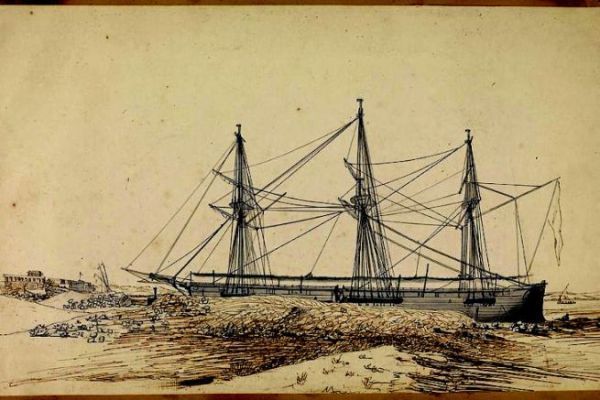Bringing a 250-ton, 23-meter high obelisk to France in the nineteenth century was a technical and human challenge. Six years were necessary to conceive and realize this exploit. For this, a ship, called Luxor, was built especially for this exceptional transport.
A demanding set of specifications
The specifications for the construction of the Luxor included many requirements. The ship must be large enough to accommodate the reclining obelisk and strong enough to carry its 250 tons of granite.
Moreover, it must be able to navigate on the Mediterranean Sea, the Atlantic Ocean, but also on the Nile and the Seine. Its draught must therefore be very small and its air draught similarly small, to pass under the bridges between Rouen and Paris.
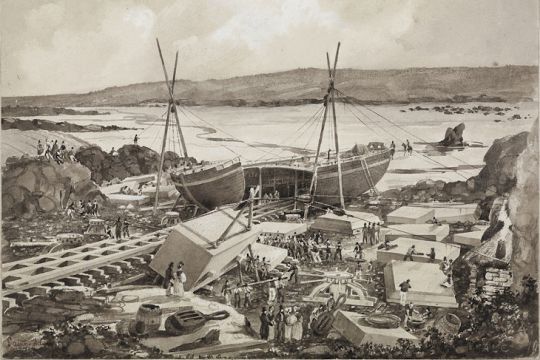
A specific naval architecture
The engineers of the Marine Engineering Department, Jean Tupinier and Apollinaire Lebas, designed an allège, a kind of flat-bottomed barge, nine meters wide to pass between the bridge piers and 43 meters long.
Moreover, to support the weight of the obelisk, the whole structure is reinforced. In his work, The Luxor obelisk, history of its translation to Paris apollinaire Lebas states " thus it was necessary to arm the ship with five keels, to create supports on each side of the main keel, and, by this means, to distribute the pressure exerted by the burden on a greater number of points. Thus, it was necessary to consolidate the walls by oblique porches, and to multiply the longitudinal connections in order to make the system solid ."
Finally, the Luxor has three masts on raised bases, in order to keep a maximum space in the hold for the obelisk.
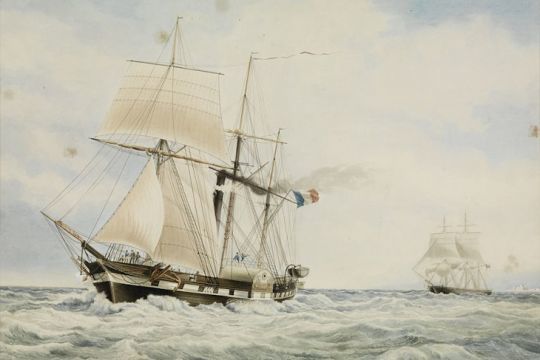
A long and perilous journey
Once built, the Louxor left Toulon in the spring of 1831 for Egypt. Apollinaire Lebas, who supervised all the operations of transport of the obelisk, was on board. He tells " since our departure, we have been sailing with the wind either downwind or upwind; under both points of sail, the ship behaved very well and made up to eight knots. It was not the same when the wind shifted to the east and we were forced to tack. The Luxor lacked the qualities necessary for this kind of navigation; she drifted a lot, an expected inconvenience, but an inevitable result of her forced conformation."
The ship reached Luxor in August 1831. It took another four months to cut down the obelisk and load it into the ship. To do this, the bow of the Luxor was cut at the level of the coltis, the foremost couple of the ship. This system is the precursor of the current car ferries, where the front of the boat opens to let cars off, for example.
Once the obelisk was loaded, the Luxor went down the Nile to meet the Sphinx, a French steamer in charge of taking it in tow. Indeed, the Louxor is not powerful enough to sail alone to the mouth of the Seine. It arrived there only in September 1833, two years after its departure from Toulon.
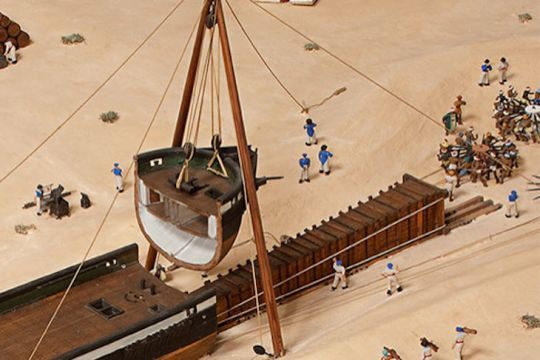
Arrival in Paris
Finally, in Rouen, the Louxor was dismasted and razed to the ground in order to pass under the bridges. It was then hauled by horses to Paris, where it entered on December 23, 1833. However, it was only on October 25, 1836 that the obelisk was erected on the Place de la Concorde with great pomp.
For this operation, ingenious lifting machines with gigantic capstans were built by Apollinaire Lebas. Since that day, the Luxor obelisk stands proudly in Paris, thanks to the engineering and naval architecture treasures deployed to bring it there.
